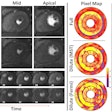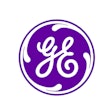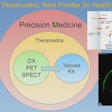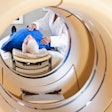In a victory for PET proponents, the U.S. Centers for Medicare and Medicaid Services (CMS) on Tuesday issued a final decision on coverage of oncology FDG-PET scans, agreeing to pay for three follow-up studies rather than just one, as it had proposed three months ago.
In a final decision memo announcing the change, CMS said it was responding to comments received since it issued its proposed policy change in March to the national coverage determination (NCD) governing how Medicare pays for oncology FDG-PET scans. CMS had proposed paying for just one initial PET scan for oncology applications and one subsequent scan, with payment for any additional scans to be determined by local Medicare Administrative Contractors (MACs).
That proposal had drawn the ire of PET advocates, who believed that the lack of a national policy for oncology FDG-PET reimbursement could mean that many patients wouldn't get the scans even though they were clinically necessary for follow-up after therapy.
CMS said it received 175 comments opposing the one-scan limitation. Many of the respondents indicated that patients undergoing second- or third-line anticancer treatment typically receive three scans in the course of their therapy.
"CMS appreciates these comments and will nationally cover at least three additional scans," the agency wrote in its final decision memo. "Coverage of additional scans (that is, more than three) shall be determined by the local MACs."
The decision demonstrates the success of the National Oncologic PET Registry (NOPR), the body created in 2006 to serve as a vehicle for data collection on PET's effectiveness in changing the management of patients with solid tumors. Under the agency's coverage with evidence development program, PET sites were able to receive Medicare coverage for their studies only if they reported their data to NOPR. With this week's decision, PET sites will no longer have to participate in NOPR to receive FDG-PET reimbursement.
In the June 11 decision, CMS acknowledged that NOPR served its purpose well, gathering data on far more patients than were found in the more traditional clinical studies that the agency also reviewed in crafting its new policy. According to NOPR data, physicians reported that FDG-PET changed their management of patients by 35% to 40%.
At the same time, however, the agency found flaws in the NOPR process. For one, NOPR only recorded intended changes in patient management as reported by physicians, not actual changes. This limitation makes it impossible to determine whether the intended changes in management actually conferred a benefit in long-term patient outcomes, the agency wrote.
"Nevertheless, NOPR-derived results have informed our consideration of the evidence base for covering FDG-PET imaging for this oncologic indication," CMS wrote. "In the setting of anticancer treatment we believe that the choices made by treating physicians in many instances change the patient's experience of illness. Therefore we have largely accepted the persuasiveness of the NOPR report, except where we believe there is other evidence available to better support an alternative conclusion."
PET proponents also scored a victory by convincing CMS to back away from its initial decision not to include PET for prostate cancer in the list of covered clinical indications. In March, CMS said that clinical evidence did not support the use of FDG-PET for prostate cancer follow-up once therapy had been completed; instead, another radiopharmaceutical, choline-11, might be better suited.
In its final decision memo, however, the agency noted that it received public comments indicating that several more recent articles had demonstrated the value of FDG-PET scans for prostate cancer. CMS decided the modality was useful for determining the effects of treatment, particularly for progressive prostate disease.
Utilization growth?
Tuesday's decision memo also addressed the agency's concerns over an increase in PET utilization, particularly if asymptomatic patients were scanned for routine surveillance with no evidence of recurrence after their initial therapy. This fear was what had driven the agency to propose the one-scan limitation, CMS wrote.
However, during the comment period following its March proposal, CMS was informed that many patients may expect to undergo more than one FDG-PET scan during later phases of their medical treatment. The agency also recognized that patients whose initial therapy might not be successful could be candidates for second-line or even further treatment, and for this reason, CMS decided to permit local Medicare contractors to determine coverage for additional FDG-PET scans beyond the initial three.
Upon hearing of the CMS edict late Tuesday at its annual meeting in Vancouver, the Society of Nuclear Medicine and Molecular Imaging (SNMMI) applauded the agency's actions. SNMMI expressed hope that local Medicare contractors would agree to pay for more follow-up PET scans than just the three mandated by the new policy.
"We appreciate the fact that CMS has changed the limit from one scan to three," said SNMMI Vice President-Elect Dr. Hossein Jadvar, PhD, in a statement. "However, it will be important for the local contractors to allow more than three when clinically necessary."
SNMMI also supports the use of FDG-PET/CT to guide treatment for patients with prostate cancer as reasonable and necessary. "Monitoring metastatic prostate cancer therapy can be difficult," said SNMMI President Dr. Gary Dillehay. "However, in some indications PET can provide useful information for physicians in creating an effective treatment plan."
The society noted that PET sites must continue to work through the NOPR process to get reimbursement for sodium fluoride (NaF) scans. SNMMI "will continue working to develop evidence for NaF-PET through the NOPR program," Dillehay said.




















